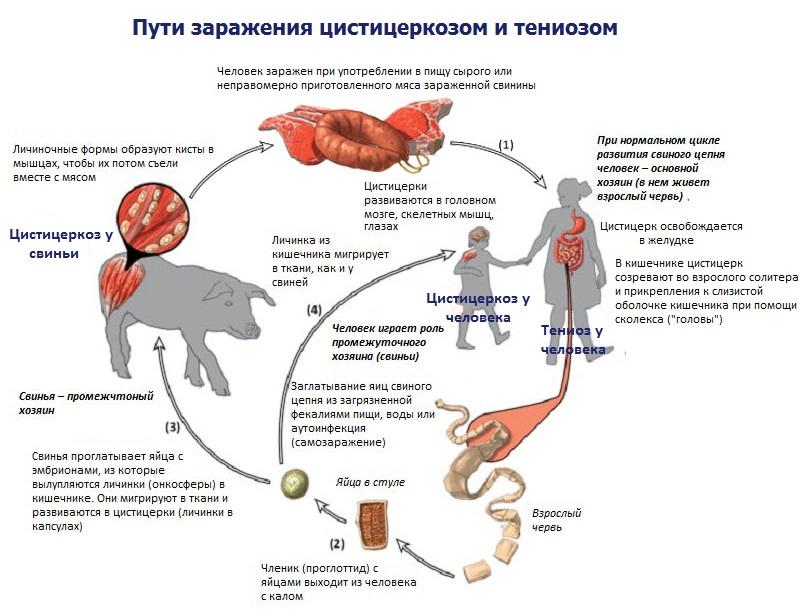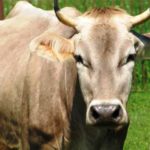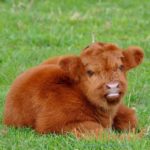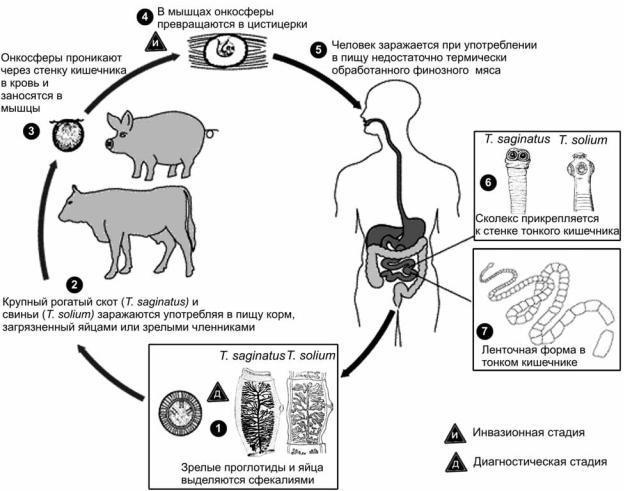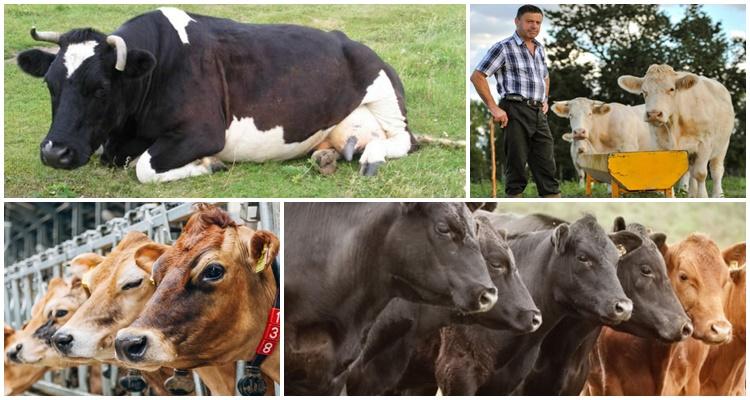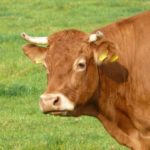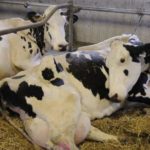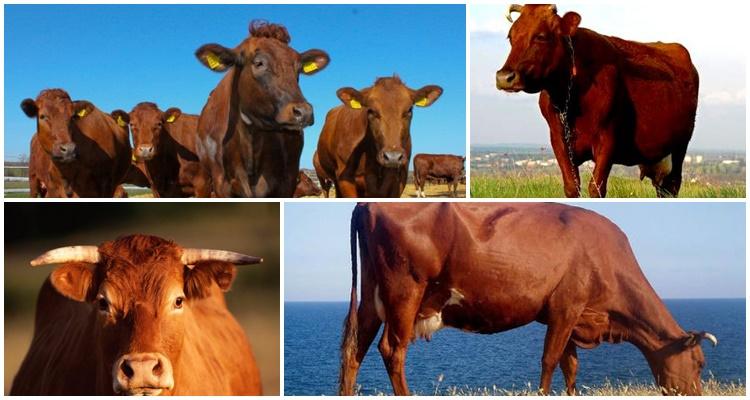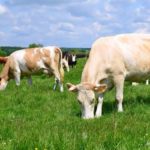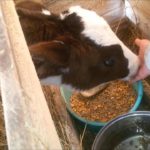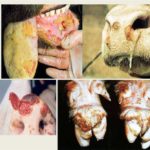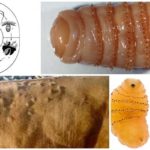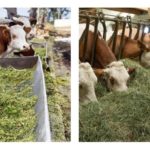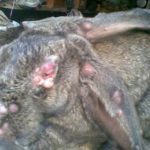Bovine cysticercosis refers to a serious parasitic infestation that occurs quite often. It is also called finnoz. The disease poses a real danger to animals. This is due to the fact that parasites can infect vital organs and cause disruption in their functioning. To cope with the disease, you need to contact a veterinarian in a timely manner.
What is Finnoz
Bovis cysticercosis is a lesion of the muscles of animals by the bovine tapeworm, which are in the larval stage.As a result, the muscles of the tongue and heart suffer. If the animal has a weakened immune system, the cells of the liver, brain, and lungs are also damaged. In addition, there is a risk of damage to adipose tissue. Cysticercosis can be acute or chronic.
Causes and mechanisms of development
The causative agent of cysticercosis is the tapeworm larva. It is characterized by a number of distinctive features:
- the presence of an oval vesicle - it has a gray tint, is covered with microscopic villi and is filled with liquid;
- presence of a head - its size does not exceed 2 millimeters;
- 4 strong suckers with rudimentary proboscis;
- ribbon-shaped body with a large number of segments.
Most often, bovine tapeworm is localized in the body of an infected person. In this case, animals are considered intermediate carriers of helminths. To prevent mutual infection, it is recommended to strictly adhere to the rules of hygiene and systematic deworming of contact people and animals.
The causative agents of cysticercosis have certain features in the life cycle:
- the intermediate host is a domestic animal;
- the final owner is a person, in which an adult can reach 10 meters and not show itself in any way;
- the formed oncosphere transforms into a full-fledged larva after 6 months - sometimes this happens earlier;
- maximum activity is observed after 7-10 months - during this period characteristic signs may appear;
- the larvae die off after 10 months - this period can last six months.
Signs and symptoms of the problem
The insidiousness of cysticercosis in cattle is that with a mild degree of infection, the pathology is asymptomatic.
It may take 2 weeks. Moreover, in the first 5-6 days, cysticercosis has a clear course, and then the characteristic symptoms disappear.
Typically, cysticercosis in animals is accompanied by the following symptoms:
- sudden deterioration in the animal’s appetite or complete refusal of food;
- increased anxiety of animals - they become too excited;
- increase in body temperature;
- severe dryness and paleness of the mucous membranes of the animal;
- frequent diarrhea;
- disturbances in the functioning of the animal’s heart – these are evidenced by constant shortness of breath and frequent stops when moving to pasture;
- pain in muscle tissue;
- pain when palpating the mesh and abomasum area.
In an animal with cysticercosis, the temperature may rise to 39.8-41.7 degrees. In this case, you don’t even need to measure it - the difference will be noticeable with an ordinary touch with your palm. Complications in the form of skin itching, blindness or ascites are extremely rare. Veterinarians call the most dangerous symptom a decrease in temperature - 1-2 days after it there is a risk of death of the animal.
Diagnosis of the disease
To make an accurate diagnosis of an animal, the following studies are used:
- Systematic examination and palpation of the oral cavity and tongue of animals. These procedures help detect helminths located on the surface.
- Allergic subcutaneous diagnosis. To do this, tuberculin is injected into the neck area, the area under the tail or under the shoulder blade. Its quantity is selected taking into account age. For young individuals, 0.15 milliliters of the substance is enough; adults require 0.2 milliliters. In an uninfected animal, after 24 hours, swelling will appear in the injection area, which will increase for another 2 days.If the reaction slows down, the injection is given again. Based on the following reaction, it will be possible to make an accurate diagnosis.
- Examination of serum using the indirect hemagglutination reaction. In this case, it is recommended to place 5 milliliters of serum in a special test tube and place it in a plate with red blood cells. If sediment appears, one can judge the presence of helminths in the animal’s body.
- Latex agglutination method. In this case, it is recommended to warm up the blood serum, add a latex suspension and a few other substances. After which it is placed on a shuttel apparatus to mix. Then a conclusion can be made about the presence of helminths. If a mark with 2 or 4 pluses appears, this indicates that the animal is infected with parasites.
Treatment of cysticercosis in cattle
Cysticercosis is quite difficult to treat. This is due to the specific effect of the pathogen. Only an experienced veterinarian can choose the right medications. Strong antihistamines are not suitable in this case. They will lead to massive death of parasites, but this can provoke inflammation and intoxication in the muscle fibers. Therefore, substances based on praziquantel are used to treat animals. These include, in particular, “Drontsit” and “Mebendazole”. The dosage of the first drug should be selected by the doctor taking into account laboratory data.
When using Mebendazole, 50 milligrams of the drug are usually prescribed per 1 kilogram of animal body weight.
Disease prevention
To avoid the development and widespread spread of cysticercosis in animals, it is recommended to follow these rules:
- Prohibit the backyard slaughter of cattle and the sale of meat products without control by veterinary authorities.
- Inform the public and livestock farmers about the risks of helminth infections.
- Monitor the condition of farms and livestock slaughter sites by veterinary and sanitary services.
- Tag slaughter cattle.
- Dispose of carcasses of infected animals if more than 3 cysticerci are detected when cutting muscle tissue.
Health standards are of no small importance for the prevention of cysticercosis:
- medical and veterinary services should cooperate closely;
- It is imperative to carry out preventive and therapeutic measures in relation to animals and people;
- adhere to sanitary and hygienic standards on farms, which helps to avoid infection with helminths - these include equipping bathrooms, examining employees’ stool, washing hands, and systematic measures aimed at deworming;
- control wastewater by the state - it needs to be filtered and disinfected.
To prevent the development of cysticercosis, close cooperation between medical and veterinary services is required. It is of no small importance to follow simple hygiene rules when working with animals and in the garden. It is also necessary to wash your hands during the preparation and consumption of meat.
Can a person become infected from sick animals?
Humans can become infected with cysticercosis from infected animals. This usually happens in the following ways:
- Eating Finnish meat. Most often, this situation occurs in nature, when cooking meat with blood, that is, dishes that cannot be sufficiently cooked.
- Neglecting to wash hands that have come into contact with raw meat.
- Drinking raw water from open reservoirs that contain helminth eggs.
A carrier of cysticercosis may not even be aware of the presence of parasites in the body for a long time.Cysticercosis has a variable incubation period. In some cases it lasts several years. If a person does not wash his hands after working in the garden, worm eggs from the soil enter the oral cavity and provoke the development of cysticercosis.
The main symptoms of invasion include the following:
- constant headaches;
- development of blindness;
- convulsions;
- epilepsy attacks;
- symptoms of meningitis;
- the appearance of dementia;
- hydrocephalus;
- speech disorders;
- mental abnormalities - they can manifest themselves in the form of delirium, depression, hallucinations, and increased agitation;
- paresis;
- dizziness.
Sometimes cysticercosis of the skin occurs. It is characterized by the appearance of towering formations. They are predominantly localized at the top of the sternum and on the inner surface of the shoulders. Bovine cysticercosis is a serious pathology that poses a danger not only to animals, but also to people. To cope with the disease, you need to immediately show the animal to a veterinarian.

